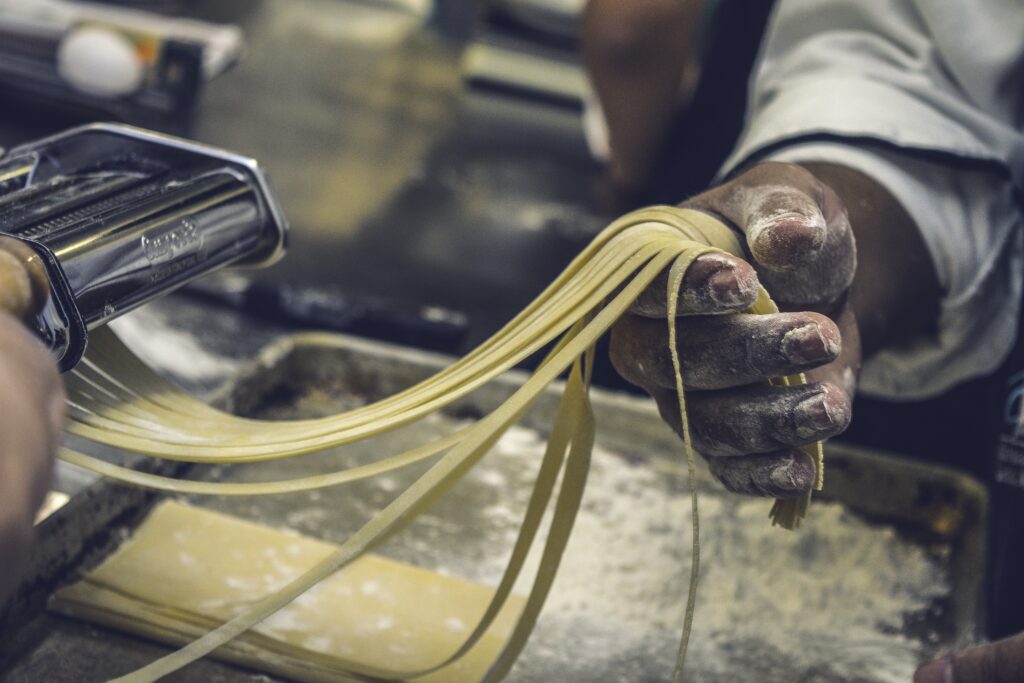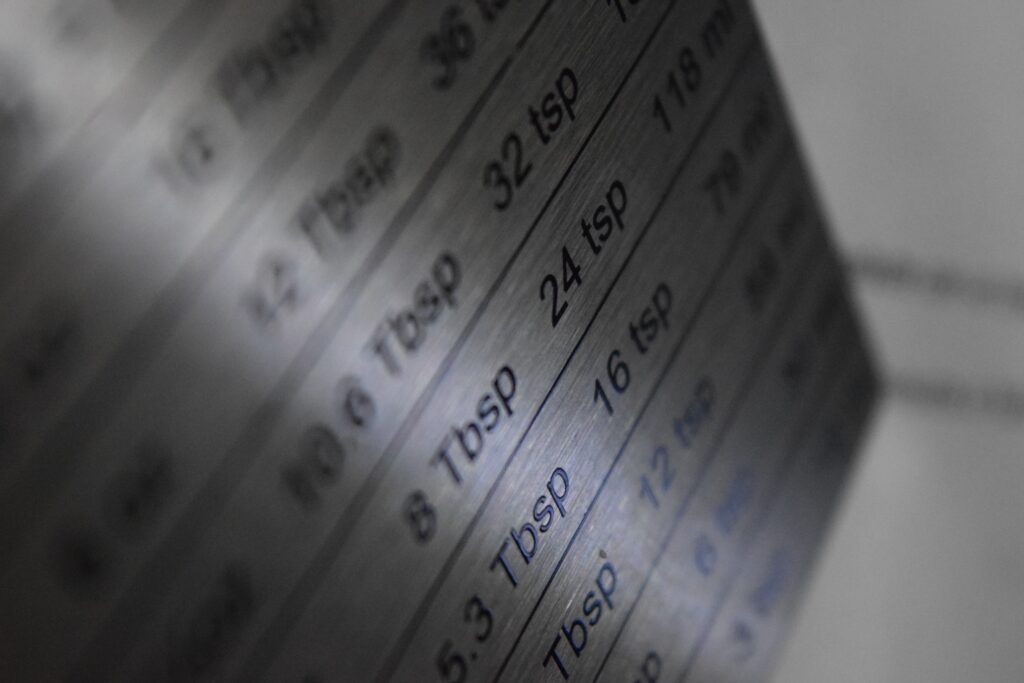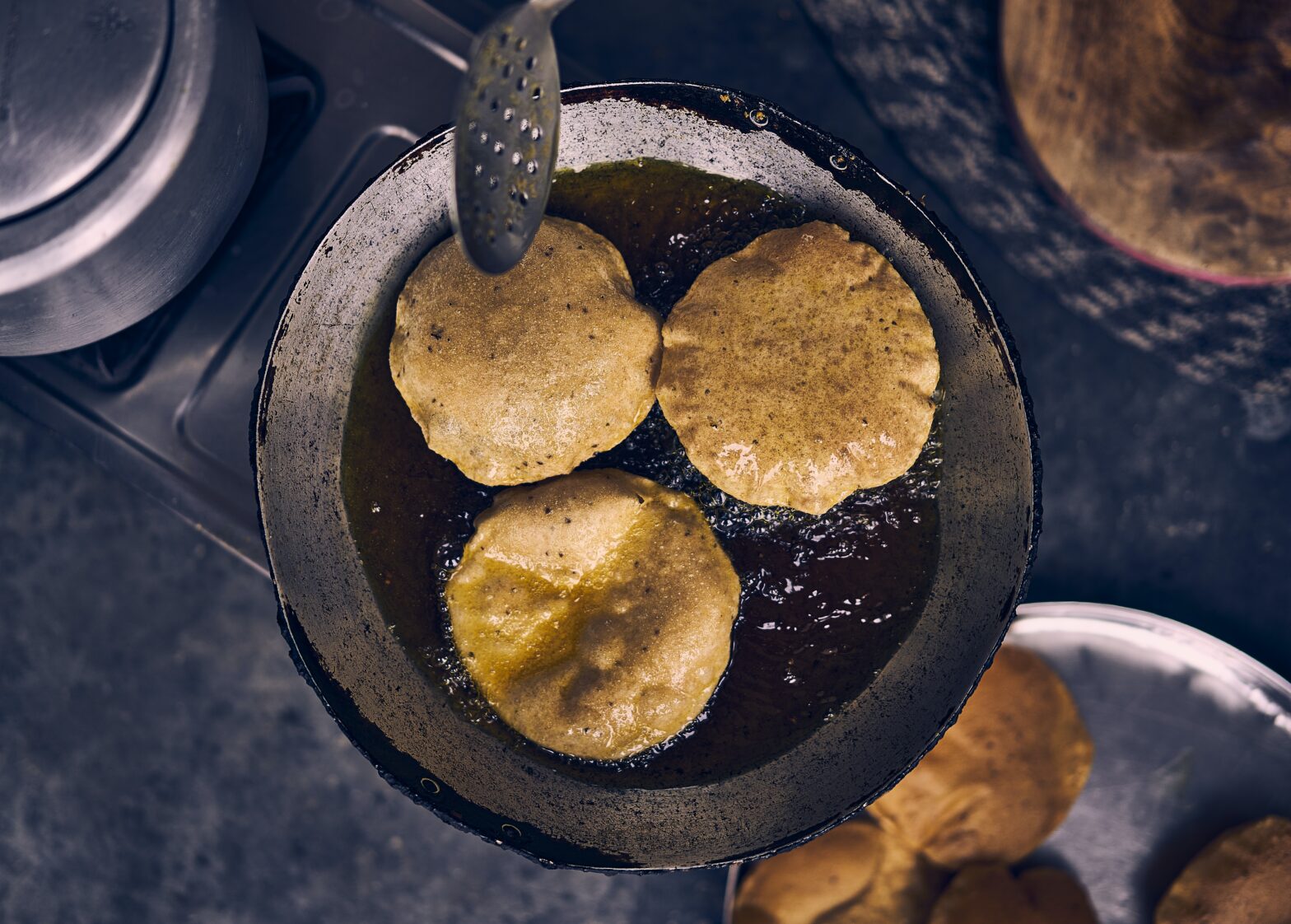In the article “Cooking Measurements: How to Measure Food Ingredients,” readers will learn the importance of using a metric style measuring cup set in order to achieve accurate and consistent results in their cooking. The article provides helpful tips on how to measure both dry and liquid ingredients, as well as a conversion chart for common measurements. Additionally, it offers guidance on where to purchase measuring cup sets and spoons. By following these recommendations, cooks can ensure that their recipes turn out perfectly every time.
Cooking Measurements: How to Measure Food Ingredients

Where To Buy Cooking Measurement Tools
Common Cups to Tablespoons and Teaspoons Conversion Chart
When it comes to cooking, precision is key. Using the right measurements for ingredients can make a significant difference in the taste and texture of your dishes. Many recipes call for measurements in cups, tablespoons, and teaspoons, so it’s essential to understand how to convert between these units accurately. To help you with this, we have created a common cups to tablespoons and teaspoons conversion chart. This chart will serve as a handy reference guide for all your cooking needs. Whether you’re measuring flour, sugar, or spices, this conversion chart will ensure that you get the perfect amount every time.
How to Measure Dry Ingredients?
Accurately measuring dry ingredients is vital to the success of your recipes. When measuring dry ingredients like flour, sugar, or spices, it’s crucial to use the correct technique to ensure consistency. Here is a step-by-step guide on how to measure dry ingredients accurately:
-
Start by selecting the appropriate measuring cup or spoon for the ingredient you are measuring. It’s best to use a dry measuring cup or spoon set specifically designed for dry ingredients, as these have flat edges that allow you to level off the ingredient easily.
-
Scoop the dry ingredient into the measuring cup or spoon, filling it to the brim. Use the back of a knife or a spatula to level off the excess, ensuring that the ingredient is even with the top edge of the measuring utensil.
-
For ingredients that can be compressed, such as brown sugar or flour, lightly pack the ingredient into the measuring cup or spoon. Do not tap or shake the utensil as this can lead to inaccurate measurements.
-
Repeat this process for each dry ingredient, ensuring that you measure each one separately to maintain accuracy.
To further assist you in your culinary endeavors, we have created a conversion chart for typical dry ingredients used in our recipes. This chart will allow you to easily convert between different measurements, making it easier to follow recipes and achieve consistent results.

Get Your Cooking Measuring Set Now
How to Measure Liquid Ingredients?
Measuring liquid ingredients may seem straightforward, but getting the exact amount is crucial to the success of your recipes. Whether it’s water, oil, or milk, here are some techniques to measure liquid ingredients accurately:
Measuring Large Quantities of Liquid
For liquid ingredients that exceed a cup, a measuring jug is the ideal tool. Follow these steps to measure large quantities of liquid:
-
Select a measuring jug that is large enough to accommodate the quantity of liquid you need to measure.
-
Place the measuring jug on a flat surface, ensuring that it is level and stable.
-
Pour the liquid slowly into the measuring jug, keeping your eye at the same level as the liquid to ensure accuracy.
-
Once the desired quantity is reached, you can use a spatula or a flat edge to level off the top of the liquid if necessary.
Measuring Small Quantities of Liquid
When dealing with smaller quantities of liquid, such as tablespoons or teaspoons, it’s best to use smaller measuring cups or spoons. Here’s how to measure small quantities of liquid accurately:
-
Select the appropriate measuring spoon or cup for the quantity of liquid you need to measure.
-
Fill the measuring spoon or cup up to the brim with the liquid, ensuring it is level.
-
Hold the measuring spoon or cup over a container, allowing any excess liquid to drip off.
-
Use a spatula or the back of a knife to level off the liquid if necessary.
To make it even easier for you, we have included a conversion chart for liquid measurements. This chart provides the equivalents for 1 cup, 3/4 cup, 2/3 cup, 1/2 cup, 1/3 cup, 1/4 cup, 1/8 cup, 1 tablespoon, 1/2 tablespoon, 1 teaspoon, and 1/2 teaspoon, making it simple to convert between different measurements.
Where to Buy Measuring Cup Sets?
A reliable set of measuring cups is an essential tool for any kitchen. If you’re in need of measuring cup sets and spoons, you have several options for where to purchase them. The most convenient option is to visit your local utensil store, where you’ll likely find a variety of measuring cup sets to choose from. Alternatively, you can also purchase measuring cup sets online from various retailers. Just make sure to read the product descriptions and reviews to ensure the quality and accuracy of the measuring cups before making your purchase.
In conclusion, understanding how to measure food ingredients accurately is crucial for achieving consistent and delicious results in your cooking. By using the common cups to tablespoons and teaspoons conversion chart, measuring dry ingredients correctly, and following the techniques for measuring liquid ingredients, you’ll be well-equipped to tackle any recipe with confidence. And with a reliable set of measuring cup sets, you’ll have the tools you need to measure ingredients precisely and improve your culinary skills. So, stock up on measuring utensils, familiarize yourself with the conversion chart, and get ready to elevate your cooking to a whole new level. Happy measuring and happy cooking!
